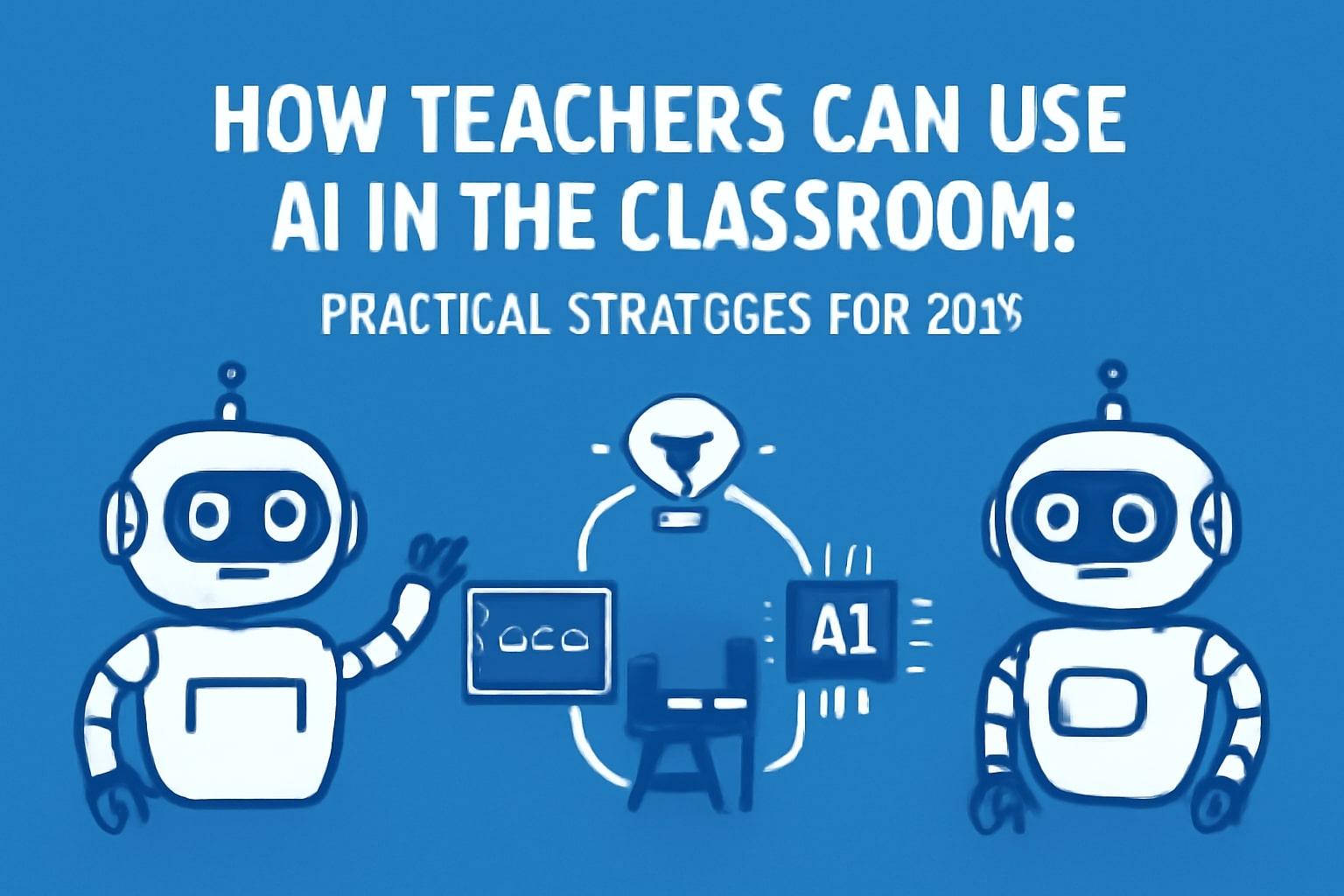For teachers, AI isn’t a threat to their profession; it’s a powerful assistant waiting to be leveraged. The key is to use AI to handle time-consuming tasks and provide data insights, freeing educators to focus on what truly matters: inspiring and connecting with students. Here are practical, actionable strategies for teachers to use AI in the classroom in 2025.

1. Lesson Planning and Content Creation with AI
How to use it: Use AI chatbots like ChatGPT or Gemini to generate lesson plan ideas, create outlines, and develop engaging activities. Read how AI is changing lesson planning.
Prompt Example: “Act as an expert 5th grade science teacher. Generate a lesson plan for a 45-minute class on the water cycle. Include a hands-on activity, key discussion questions, and a formative assessment strategy.”
2. Differentiation and Personalized Learning
How to use it: Use AI to quickly adapt materials for different reading levels or learning needs.
Prompt Example: “Take this paragraph about the Civil War and rewrite it for a 3rd grade reading level.” or “Create three different versions of this math word problem: one for beginners, one for on-level students, and one for advanced students.”

3. AI-Powered Writing Feedback
How to use it: Use AI tools to provide students with initial feedback on grammar, structure, and clarity, allowing you to focus your energy on feedback for creativity and argument strength.
Tool Example: Students can draft essays in Google Docs with Grammarly enabled for real-time suggestions. You can then use AI to summarize the most common errors across the class and plan a mini-lesson. Learn how AI tutors provide feedback.
4. Automating Administrative Tasks with AI
How to use it: Save hours each week by automating routine tasks.
- Emails: Use AI to draft routine emails to parents (e.g., absence notices, field trip reminders).
- Multiple-Choice Grading: Most learning management systems (LMS) like Canvas or Google Classroom have built-in auto-grading for quizzes.
- Sub Plans: “Generate a detailed sub plan for a day I am absent. My 2nd graders will be practicing two-digit addition and reading a story from our anthology.”
5. Creative Teaching Materials with AI Tools
How to use it: Spark creativity and engagement with AI-generated content.
- Writing Prompts: “Generate 10 creative writing prompts for high school students about climate change.”
- Discussion Starters: “Create a list of debate topics for a middle school social studies class.”
- Images: Use AI image generators to create unique visuals for classroom presentations.

6. AI for Teacher Professional Development
How to use it: Use AI as a personal PD coach for classroom management and instructional strategies.
Prompt Example: “I’m a new teacher struggling with classroom management. Simulate a conversation where I describe a challenging scenario and you provide advice based on proven strategies.”
Best Practices for Using AI in the Classroom
- You are the Expert: AI is a tool, not a curriculum director. Always review, edit, and customize AI-generated content.
- Transparency with Students: Discuss ethical use of AI. Set clear guidelines on assistance vs. plagiarism.
- Start Small: Experiment with one task (like generating discussion questions) before scaling up.
- Data Privacy: Avoid inputting sensitive student information into public AI platforms.
By embracing these strategies, teachers can harness the power of AI to reduce their workload, personalize instruction, and reclaim time and energy for fostering human connections — the true heart of great teaching.
